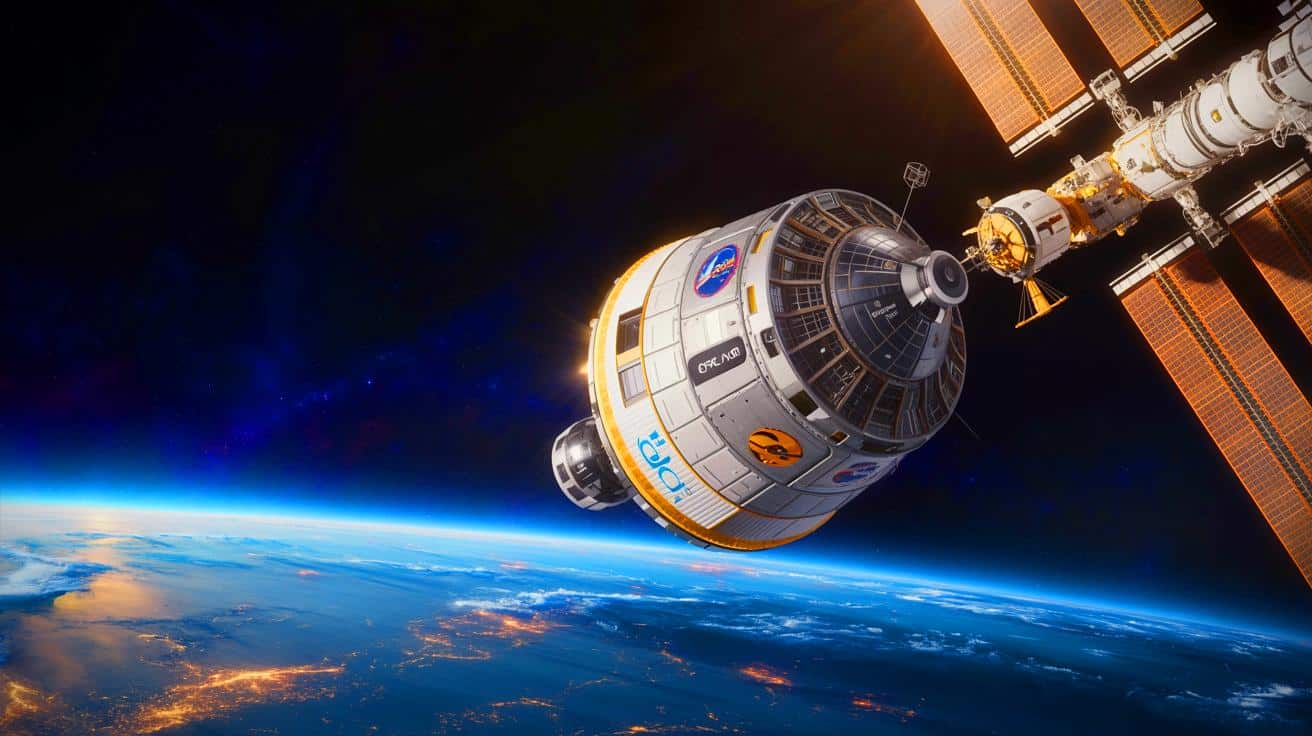IN A NUTSHELL
🚀 The Cygnus XL spacecraft encountered a main engine failure, delaying its mission to the ISS.
📦 This mission carries the heaviest load of supplies ever delivered by a commercial vehicle to the ISS.
🛠️ Engineers are considering using smaller thrusters to adjust the spacecraft’s orbit for docking.
🔧 The mission’s delay underscores the challenges and risks inherent in space exploration.
The recent setback with Northrop Grumman’s Cygnus XL spacecraft, which was scheduled to deliver 11,000 pounds of supplies to the International Space Station (ISS), highlights the complexities and challenges of space missions. This mission, crucial for its cargo and the new model of the Cygnus spacecraft, encountered an unexpected issue when its main engine shut down prematurely. The incident has prompted NASA and its partners to evaluate alternative approaches to ensure the spacecraft reaches its destination. This development not only affects the current mission but also underscores the importance of reliability and contingency planning in space exploration.
Engine Failure Raises Concerns
The Cygnus XL spacecraft’s mission encountered an unexpected complication when its main engine shut down earlier than planned during two critical burns. The burns were intended to adjust the spacecraft’s orbit to align with that of the ISS. This unexpected shutdown has delayed the delivery of essential supplies to the space station, which were initially scheduled to arrive on Wednesday. NASA has announced that ground teams are actively assessing backup plans to facilitate the spacecraft’s rendezvous with the ISS, albeit not according to the original schedule.
The spacecraft was launched aboard a SpaceX Falcon 9 rocket from Cape Canaveral Space Force Station in Florida. The initial stages of the mission proceeded smoothly, with Cygnus separating from the Falcon 9 rocket as planned. However, the issue with the main engine has created uncertainty regarding the timing and success of the mission. Although the exact cause of the engine problem remains undisclosed, NASA reassures that all other systems on the Cygnus XL are functioning as expected.
Significance of the Cygnus XL Mission
This mission marks Northrop Grumman’s 22nd cargo resupply mission to the ISS, a testament to the company’s pivotal role in supporting the space station’s operations. The Cygnus XL spacecraft, an upgraded model, is designed to carry 33 percent more cargo than its predecessors. Standing 5.2 feet longer, it represents a significant advancement in the capabilities of commercial space vehicles. This mission is particularly significant as it is carrying the heaviest load of supplies ever delivered by a commercial cargo vehicle to the ISS.
The cargo on board includes fresh food, critical hardware for biological and technological experiments, and essential spare parts for the station’s systems. Among these are components for the station’s urine processor and toilet, vital for maintaining the crew’s living conditions. The potential loss of these supplies underscores the mission’s importance and the impact of any delay or failure.
Challenges and Contingency Plans
The main engine of the Cygnus spacecraft uses a hypergolic mixture of hydrazine and nitrogen tetroxide propellants, known for their reliability due to their self-igniting properties. Despite this, the engine failure has prompted consideration of alternative strategies to complete the mission. One potential solution involves using the spacecraft’s smaller reaction control system thrusters. These thrusters, typically used for minor adjustments and orientation, might be employed to gradually adjust the spacecraft’s orbit to enable docking with the ISS.
However, this approach presents its own challenges and uncertainties. The smaller thrusters were not designed for such extensive maneuvers, and their effectiveness in this scenario is under evaluation. NASA and Northrop Grumman are weighing these options carefully, as the success of the mission depends on a viable solution to overcome the main engine’s failure.
Implications for Future Missions
The incident with the Cygnus XL spacecraft highlights the inherent risks and challenges associated with space missions. While the spacecraft is not designed to return to Earth intact, its role in delivering crucial supplies to the ISS is paramount. Any failure to reach the station could result in significant losses, not only in terms of cargo but also in the advancement of scientific experiments and station maintenance.
Northrop Grumman’s ability to adapt and find solutions in such situations is critical. The lessons learned from this mission will likely influence future resupply missions and the development of more robust systems. As the demand for space exploration grows, ensuring the reliability and success of these missions becomes increasingly important. Moreover, the incident raises questions about how future missions can be safeguarded against similar technical failures.
As NASA and Northrop Grumman continue their efforts to resolve the engine issue and ensure the Cygnus XL’s successful journey to the ISS, the situation prompts broader reflection on the resilience and adaptability of current space technologies. How can space agencies and companies further enhance the reliability of spacecraft to mitigate risks and ensure the success of future missions?
This article is based on verified sources and supported by editorial technologies.
Did you like it? 4.6/5 (27)

